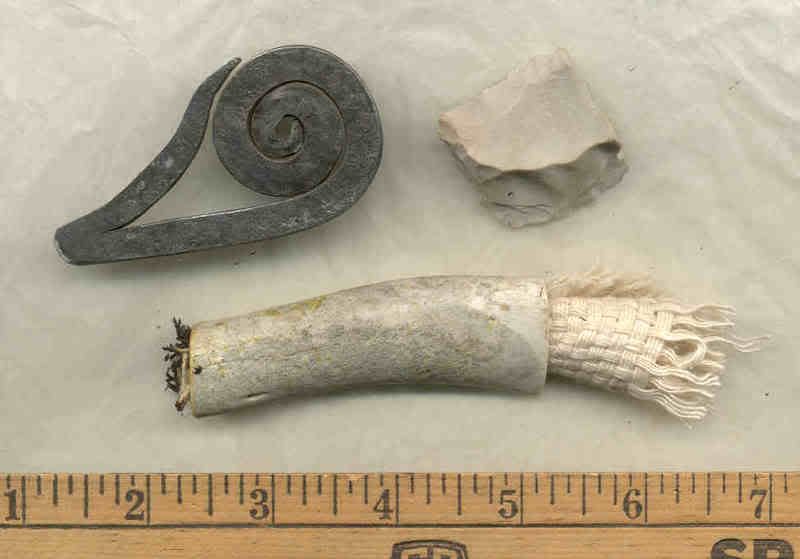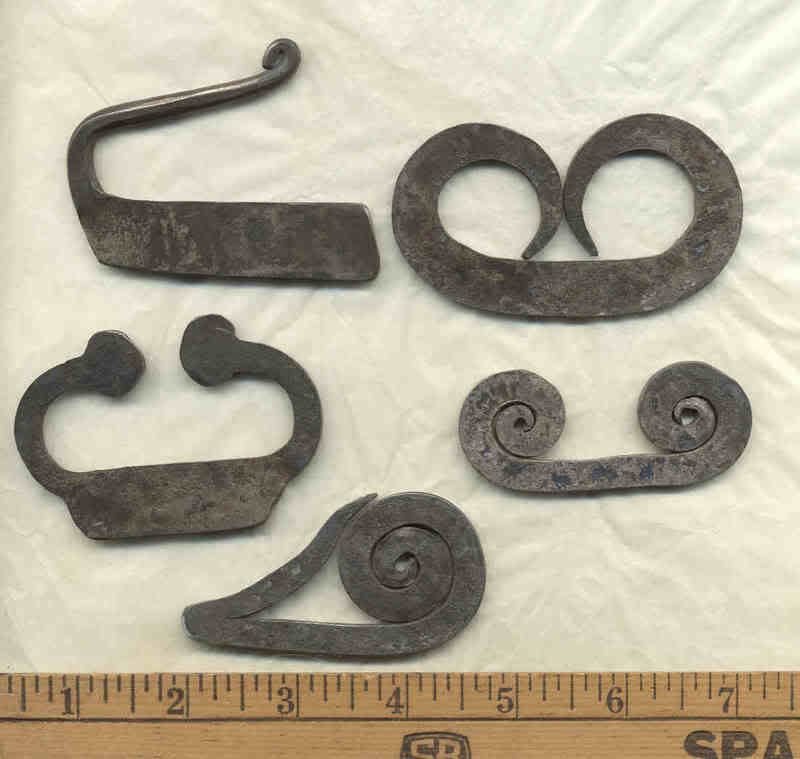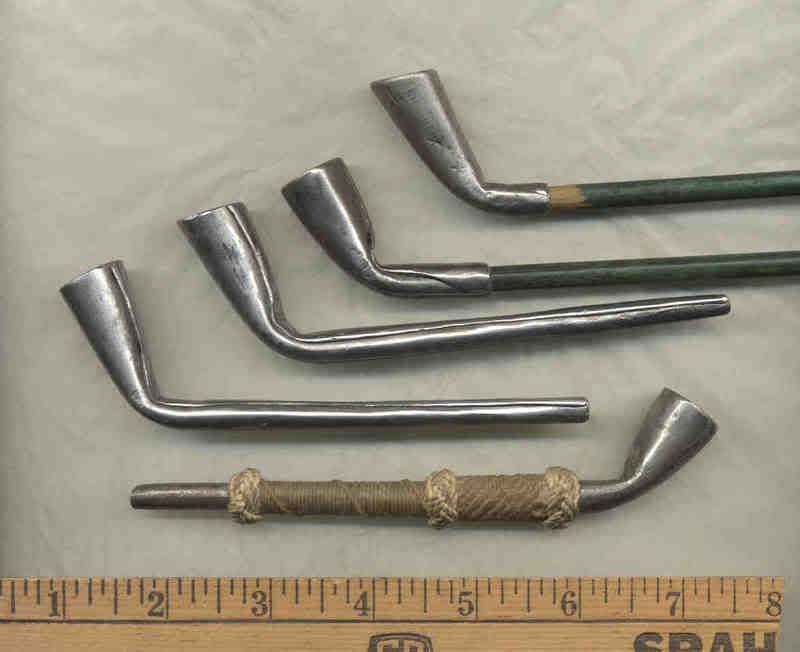In several of the discussions on fire starting, charclothe, and tinder tubes, I mentioned what looks like a BONE version in a museum collection out in New England. NO, I can't find back the pic I saved and the info on where it is. The archeologists just had it tagged as "unknown object" or something like that. It was a section of leg bone with a clothe strip through it. And both ends of the bone were charred a little inside. The big surprise was that the cloth had survived in the ground all that time, but there was no evidence of charring on the clothe itself.
Well, one look told me that it was probably a Tinder Tube - just made from a hollow piece of bone. And local made in imitation of an object the Indian had seen being used by the Europeans - especially a higher class or well to do person. So I made one up a couple days ago.

It works well. I tightly rolled up some of that cotton "monk's clothe" from wally world, slip/poked/twisted it through, lit the end, let it burn pretty thoroughly, and the pulled the clothe back into the tube flush with the end. It smoldered for a bit and then went out. I then pulled that charred end out a bit, and struck sparks onto it. It caught fairly quickly. Gentle blowing/fanning quickly spread the ember throughout the whole end. Again, I pulled it back into the tube and it quickly went out. I did the several times - with the same results.
So it does work. The only problem I had was pushing/pulling the tightly rolled up clothe through the tube. I had to use a vent pick or canoe awl to pick/pull the clothe out. It did not slide easily - like when using a copper/brass tube. But the inside of the deer leg bone is not smooth like those metal tubes, and it also flairs a little towards each end. And the inside is also a little rough. So pushing the clothe through was the only real problem encountered.
Also, it worked better when I rolled up enough of the clothe to make it a pretty tight fit inside the bone. This helped it smolder and burn out when pulled back flush with the end. It does need to smolder a little bit before it goes out - to create new "char clothe" on the end. The end of the bone/tube then protects that charred end from being knocked or brushed off when bouncing around in your fire kit.
An interesting project. Now I just need to find back that pic of the original, and the info about where and the date. As I recall, it was a mid to late 1600's Seneca village site up in New York - but past abuse of brain cells may affect my memory of it.
Fun project ... and an interesting hour's worth of tinkering around.
Mikey - yee ol' grumpy German blacksmith out in the Hinterlands
p.s. The flint striker is a Scottish one based on an original in a Brit museum - with that generic 18th century time frame attached. But they said the influence for it probably came from France or Flanders where it was common. The large musket flint is one of those Missouri gun flints from Rich Pierce. Great flint!
Well, one look told me that it was probably a Tinder Tube - just made from a hollow piece of bone. And local made in imitation of an object the Indian had seen being used by the Europeans - especially a higher class or well to do person. So I made one up a couple days ago.

It works well. I tightly rolled up some of that cotton "monk's clothe" from wally world, slip/poked/twisted it through, lit the end, let it burn pretty thoroughly, and the pulled the clothe back into the tube flush with the end. It smoldered for a bit and then went out. I then pulled that charred end out a bit, and struck sparks onto it. It caught fairly quickly. Gentle blowing/fanning quickly spread the ember throughout the whole end. Again, I pulled it back into the tube and it quickly went out. I did the several times - with the same results.
So it does work. The only problem I had was pushing/pulling the tightly rolled up clothe through the tube. I had to use a vent pick or canoe awl to pick/pull the clothe out. It did not slide easily - like when using a copper/brass tube. But the inside of the deer leg bone is not smooth like those metal tubes, and it also flairs a little towards each end. And the inside is also a little rough. So pushing the clothe through was the only real problem encountered.
Also, it worked better when I rolled up enough of the clothe to make it a pretty tight fit inside the bone. This helped it smolder and burn out when pulled back flush with the end. It does need to smolder a little bit before it goes out - to create new "char clothe" on the end. The end of the bone/tube then protects that charred end from being knocked or brushed off when bouncing around in your fire kit.
An interesting project. Now I just need to find back that pic of the original, and the info about where and the date. As I recall, it was a mid to late 1600's Seneca village site up in New York - but past abuse of brain cells may affect my memory of it.
Fun project ... and an interesting hour's worth of tinkering around.
Mikey - yee ol' grumpy German blacksmith out in the Hinterlands
p.s. The flint striker is a Scottish one based on an original in a Brit museum - with that generic 18th century time frame attached. But they said the influence for it probably came from France or Flanders where it was common. The large musket flint is one of those Missouri gun flints from Rich Pierce. Great flint!








